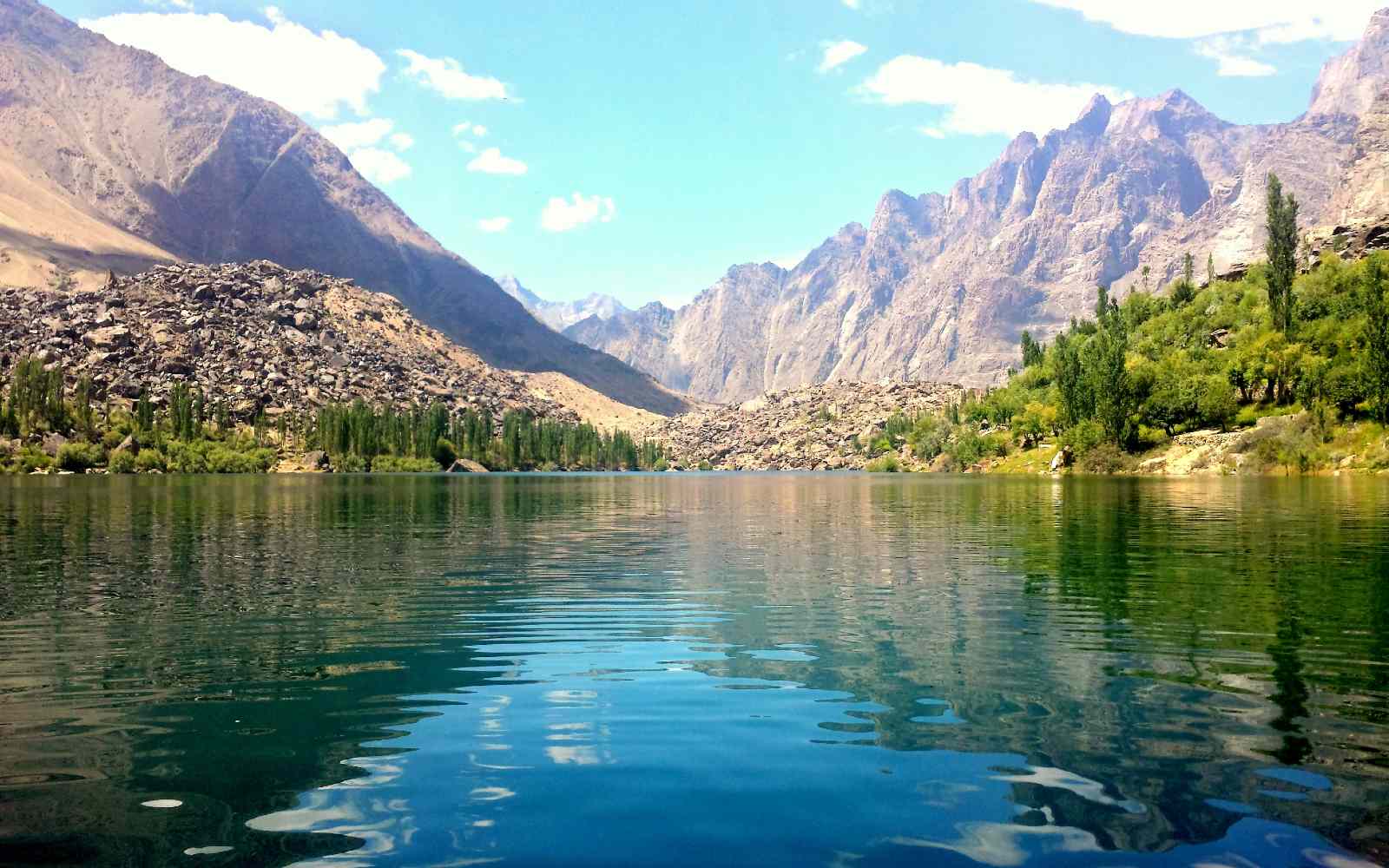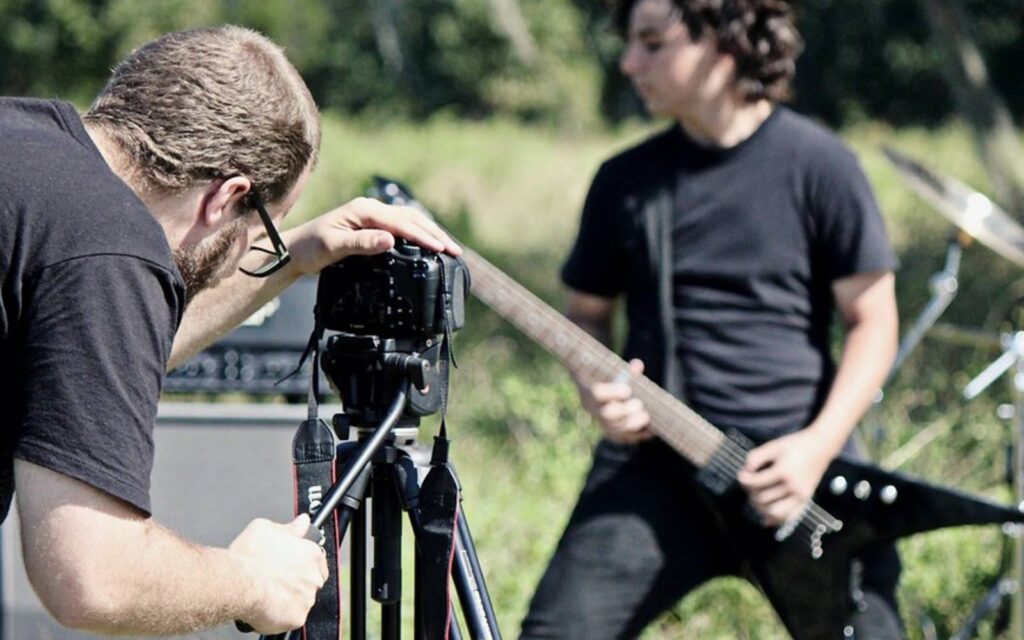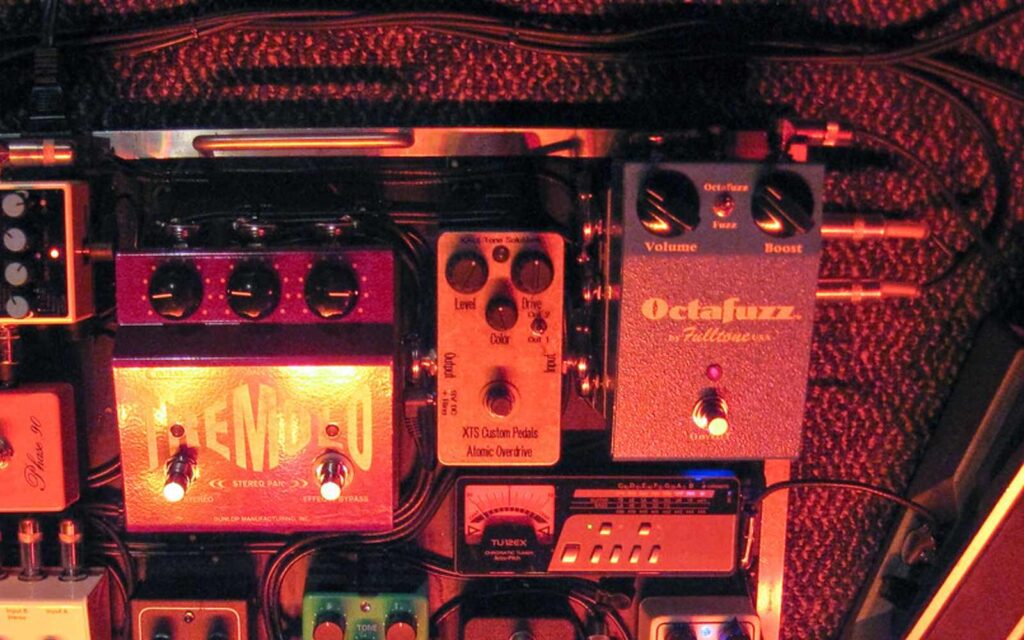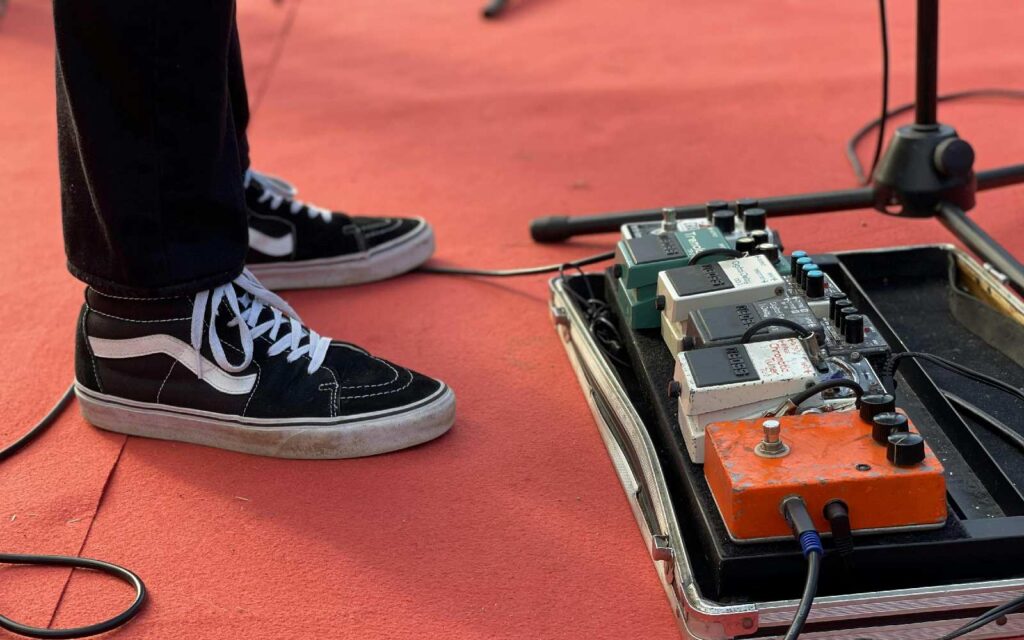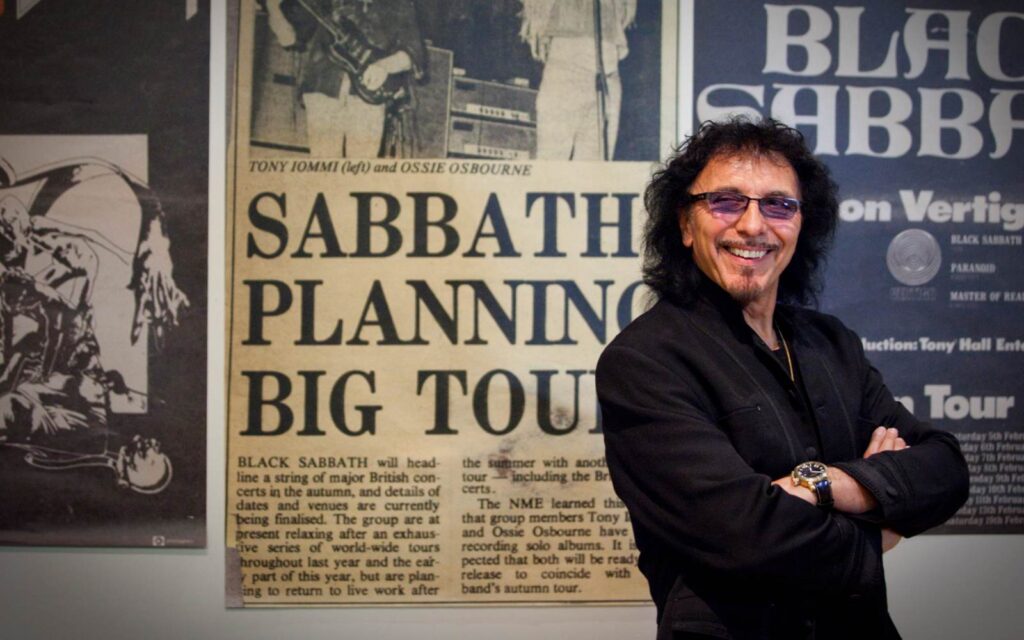Here are 15 different ways Mother Nature cast her shadow.
Flowers and gardens and rivers have inspired countless songs. But they can be used to talk about spirituality, running from fame, childhood and even drug addiction. Troye Sivan uses blooming flowers to signify blossoming romance, while others use it to discuss luck, promise and more.
“FLAME TREES” – COLD CHISEL
Drummer Steve Prestwich wrote the melody on a bass guitar, and hand balled the lyrics to keyboard player Don Walker.
It took Walker 18 months to get an idea for it. When he did it, he polished it off over two afternoons in his flat in Kings Cross in Sydney.
The idea of the flame trees came from Grafton, in Northern NSW, where every spring, the rainforest tree Brachychiton acerifolius (the Illawarra Flame Tree) would turn the place into a blaze of orange (“set fire to this town”).
Read more gear features, artist interviews and how-to columns here.
Walker had grown up in a farm outside Grafton (“we shared some history, this town and I”).
This is where he grew up listening to his harmonica player father’s record collection and learned to play piano so he could jam with the old man.
When Walker heard Prestwich’s melody he knew it had to have words that were dramatic.
In the narrative, a girl is returning to her small town after finding success in the big city, hitching a ride in a truck.
“Flame Trees” is open to many interpretations. One is that, written as Cold Chisel were breaking up acrimoniously, Walker was nervous about what he planned to do after.
After years of dedicating himself to the band, he admitted no plans what to do afterwards, and the song’s lyrical mood was about “the emptiness and vacuum that was going to follow Chisel’s break up.”
“LOTUS FLOWER” – RADIOHEAD
The first single off The King of Limbs (2011), “Lotus Flower” (also known as Sacred Lotus) took its name from the national flower of India and Vietnam.
In ancient Asian literature, the lotus is a divine symbol of sexual purity and highest female assets.
On the other hand, the oldest lotus flower is 1,300 years old and found in a dry lake in China, and this might have a connection to the title of the album.
It referred to 1,000-year old oak tree in Wiltshire’s Savernake Forest, a few miles from Tottenham House, where the band recorded much of the In Rainbows album, and a comment on survival.
“IN THE GARDEN” – GUNS N’ ROSES
This collaboration between the Gunners and Alice Cooper is also open to many lyrical interpretations.
Most common is that the garden is the happy experience of taking drugs. You think it’s paradise.
But the character in the song knows it’s dangerous to enter the garden (“Turned into my worst phobia/ A crazy man’s utopia”).
But all his friends are in there and he can’t resist joining them.
“FOR THE ROSES” – JONI MITCHELL
It was written after Joni Mitchell quit show business for the first time, because of the pressure of being in the spotlight, and dealing with an “unfair, crooked business (which) has nothing to do with real talent.”
In 1972, when she returned after a 12 month hiatus, she explained to the audience at New York’s Carnegie Hall about the song, “It comes from the expression, ‘to run for the roses.’
“You know what that’s all about—that’s when you take this horse and, you know, like he comes charging into the finish line and they throw a wreath of flowers around his neck and then one day they take him out and shoot him.
“It’s kind of a macabre thing to say, isn’t it, I guess?”
“BLUE ORCHID” – THE WHITE STRIPES
The song intertwines the Biblical story about Eve taking a bite out of an apple in the Garden of Eden, and the Russian child porn website Blue Orchid where the line “You took a white orchid and turned it blue” sums up how they permanently wrecked the lives of the once-pure.
The video shows British model Karen Elson take a bite out of a white apple and instantly see her body stained with black.
Elson and Jack White met at the video shoot, and married some weeks later during a South American tour.
Within eight years they had split, fighting over parenting rights and she had a restraining order against him.
“NORTHERN RIVERS” – PAUL KELLY
“Water appears very often in my songs,” Paul Kelly said. “I live on Port Philip Bay (in Melbourne) and when I’m home I go down to the sea several times a week if I can.
“When I’m traveling and visiting new cities, I always look for the water, be it a river, a lake, a canal, the sea or a swimming pool.”
Out of his water-themed compilation Rivers And Rain came “Northern Rivers”, “a love song set in contrasting landscapes (in the NSW region) about a mysterious girl”.
Kelly revealed the song came together quickly: “I took it to the band and it came out really easily like they’d been playing it forever.”
“SMALL POPPIES” – COURTNEY BARNETT
This seven-minuter from Courtney Barnett’s debut album Sometimes I Sit And Think, And Sometimes I Just Sit, was not about the flower associated with ANZAC Day but about the tall poppy syndrome that the Melbourne singer songwriter would face.
She sings: “I don’t know quite who I am, but man I am trying/I’ll make mistakes until I get it right.”
But there was no tall poppy syndrome when the album came out. It entered the Australian charts at #4, #16 in the UK and #20 in the USA.
“IN THE GARDEN” – VAN MORRISON
Grumpy Irish troubadour combines being in the garden with finding spirituality, philosophy and the inner self.
“No guru, no method, no teacher/ Just you and I and nature/And the Father in the garden.”
According to Morrison, the song is based upon a type of transcendental meditation, which takes about ten minutes before a person arrives at tranquillity.
“WILDFLOWER” – THE AVALANCHES
The Melbourne band named their first album in 16 years, Wildflower, describing the 1.14 title track “a certain type of person, a free spirit.”
“BLOOM” – TROYE SIVAN
“It’s about flowers!” Aussie pop singer Troye Sivan would tell interviewers with a wink about the title track of his 2018 album.
The video included on the app released with the single sees Sivan look at the camera insisting “it’s about flowers” while seated in a bed with and his then-boyfriend Jacob Bixenman was sleeping behind Troye Sivan.
Troye Sivan is in fact using the metaphor of someone entering a walled garden with the loss of virginity. He revealed, “Lyrically I think it’s the most subversively queer song on the album. That’s kind of what makes me like it so much — it’s almost like a little inside joke.”
“GREEN RIVER” – CREEDENCE CLEARWATER REVIVAL
“Green River” was seen as part of Creedence’s “southern rock” that included “Proud Mary” and “Born On The Bayou”.
Truth is, group leader and chief songwriter John Fogerty had never been to the American South.
“’Green River’ is really about this place where I used to go as a kid on Putah Creek, near Winters, California,” Fogerty revealed to American TV series Storytellers.
“I went there with my family every year until I was ten. Lot of happy memories there.
“I learned how to swim there. There was a rope hanging from the tree. Certainly dragonflies, bullfrogs.
“There was a little cabin we would stay in owned by a descendant of Wild West legend Buffalo Bill Cody. That’s the reference in the song to Cody Jr. (“Up at Cody’s camp I spent my days…”).
Keeping with his childhood theme, the Green River title came from a brand of green lime flavoured syrup that he loved in those days.
“BLEEDING THE ORCHID” – SMASHING PUMPKINS
The song from The Smashing Pumpkins’s seventh studio album Zeitgeist is about the commercialisation of ‘90s alt/rock, and inspired by the deaths of Nirvana’s Kurt Cobain and Alice in Chains’s Layne Staley.
Frontman Billy Corgan explained: “I realised listening to ‘Orchid’ that it’s a distant commentary on what happened to the bands of the ’90s.
“The song even has a bit of an homage to Alice in Chains in the harmonies.
“Alice in Chains is one band that I appreciate so much more now than when we were all in the same competitive streak.
“I also thought a lot about Kurt Cobain and what we’d all been through as a collective unit and the battle-scarred feeling of that.
“I wondered about what our contribution was as a generation.
“I’m close to Courtney Love. I know the negative ramifications of that time. I see what she goes through, and the ramifications on [Love and Cobain’s daughter] Francis Bean.
“Everybody can talk about the Kurt on a T-shirt, but they’re still real people. So in a way, that song is a cost assessment.”
“FLOWER ON THE WATER” – JOHN WILLIAMSON
In 2003, then Australian Prime Minister John Howard invited country music singer songwriter John Williamson to Bali for the first memorial of the Bali bombings, where he sang “Waltzing Matilda” at the site.
Later on the Australian party attended a second official ceremony, at the beach.
Williamson recalls: “Balinese in canoes and Aussies on surfboards carried flowers out to sea to float on the water as the sun went down.
“This was quite a healing process. After that, we strolled past the photos and wreaths beside the bomb site.
“It was here that I copied down four lines that were attached to a photo. I felt I might be able to write a song that could also assist in the healing process.”
The lines were:
“To hear your voice, to see you smile
To sit and talk to you awhile
To be together the same old way
That would be our greatest wish today.”
For the tenth anniversary, Williamson returned to Bali to sing “Flower On The Water”. In Australia it’s become a song sung at funerals.
“DEAD FLOWERS” – THE ROLLING STONES
Recorded ten days after The Rolling Stones’ disastrous free concert in Altamont, California, where a man who was shot by Hell’s Angels who had been hired by the band as security, this melancholy country tune was supposed to be an exorcism.
The story was about a bitter breakup with a woman called Suzie, queen of the underground.
“Well, when you’re sitting back in your rose-pink Cadillac… I’ll be in my basement room with a needle and a spoon and another girl to take my pain away,” slamming home with “Send me dead flowers to my wedding, and I won’t forget to put roses on your grave.”
“CRIMSON & CLOVER” – TOMMY JANES AND THE SHONDELLS
Ever since the 1968 psychedelic pop track became a #1 in the US and most of Europe (#4 in Australia) for the US pop band, people have come up with a number of interpretations.
The song’s two writers don’t help. James said it was a combination of his comprising his favourite colour – crimson – and his favourite flower – clover.
Drummer Peter Lucia, Jr. insisted he came up with the phrase after watching a high school football game between New Jersey teams Crimson and Hopatcong (green or clover).
Possibly the biggest of them all, Mort Garson’s Mother Earth’s Plantasia is music for plants. Keep reading here.
